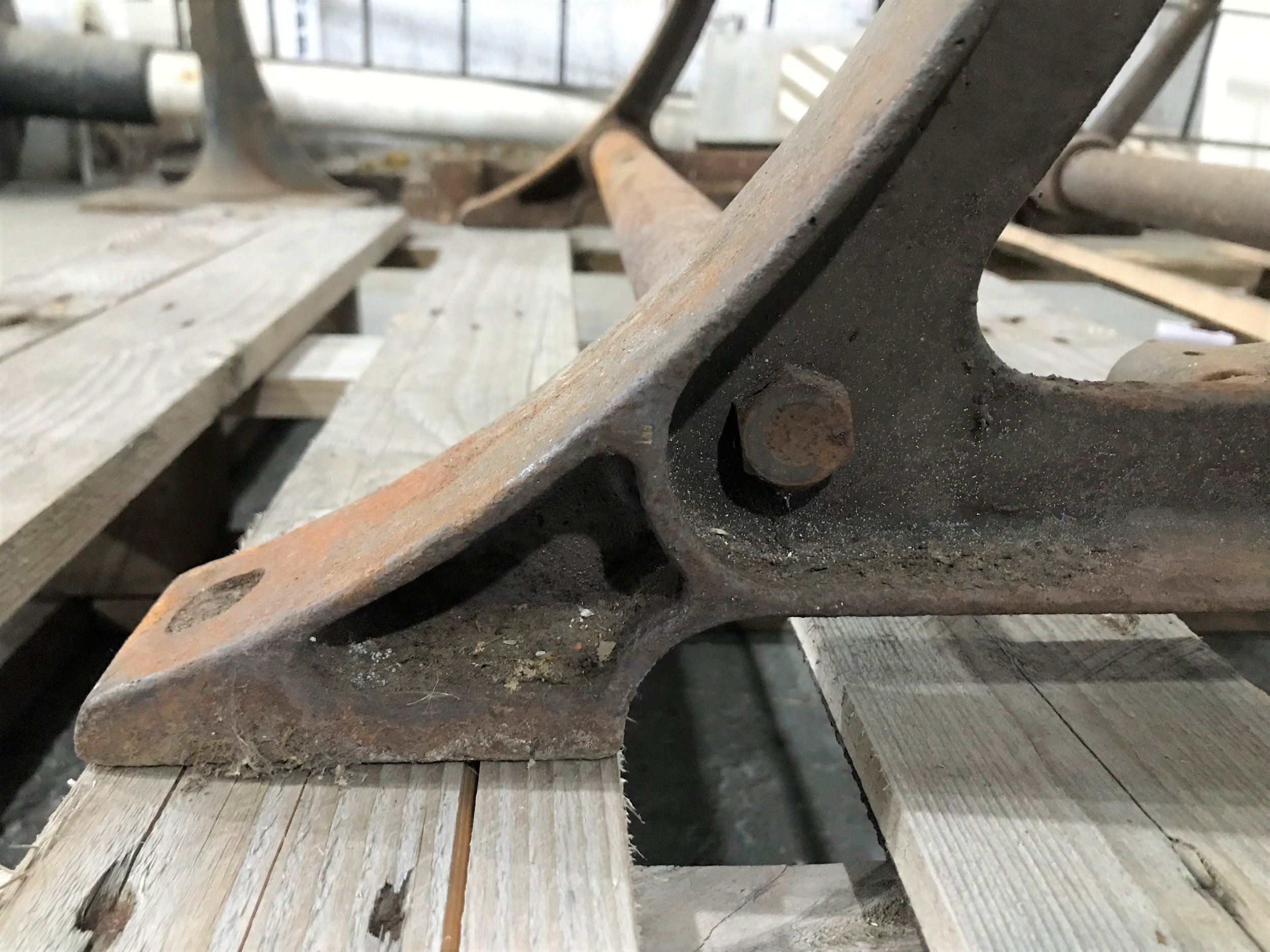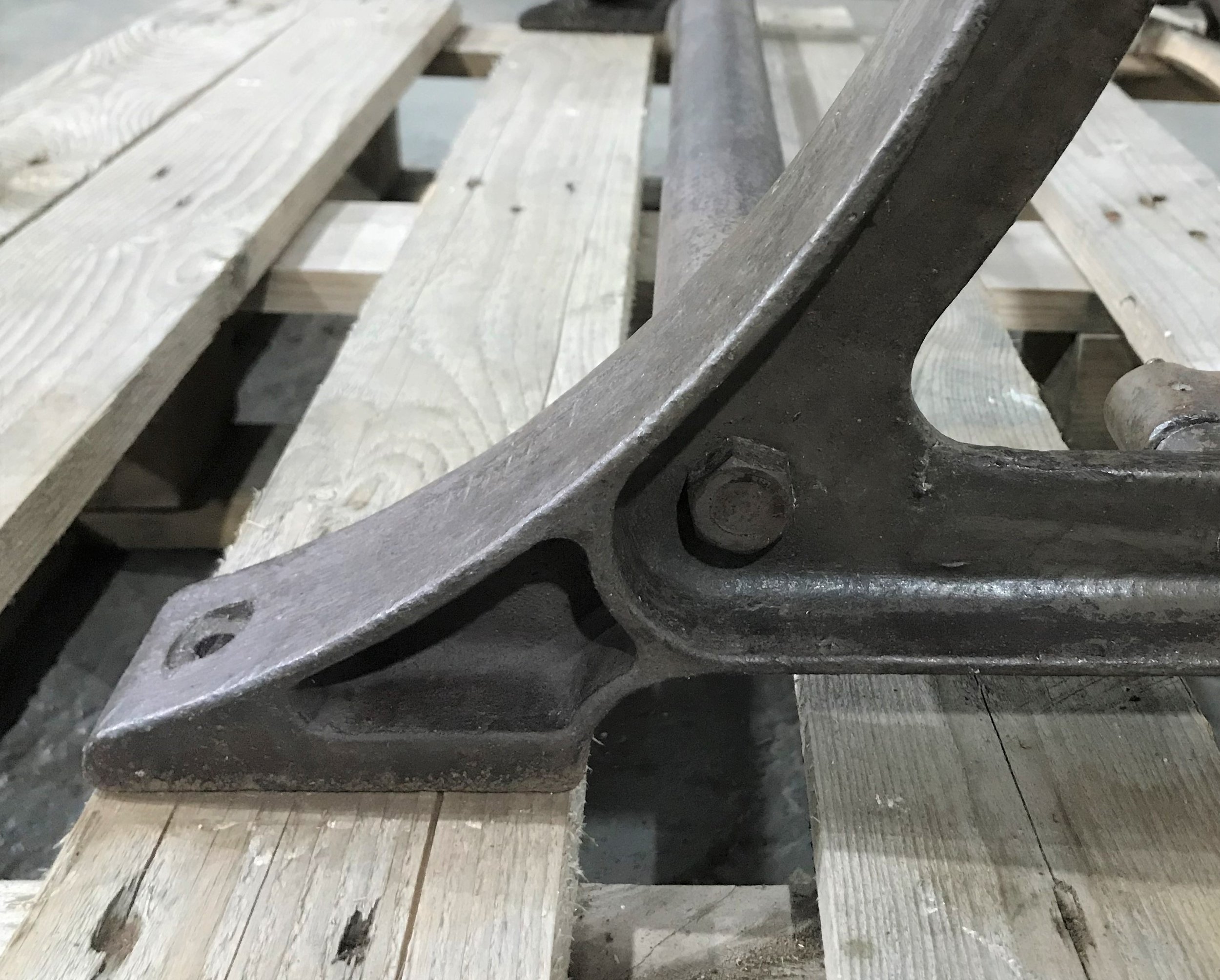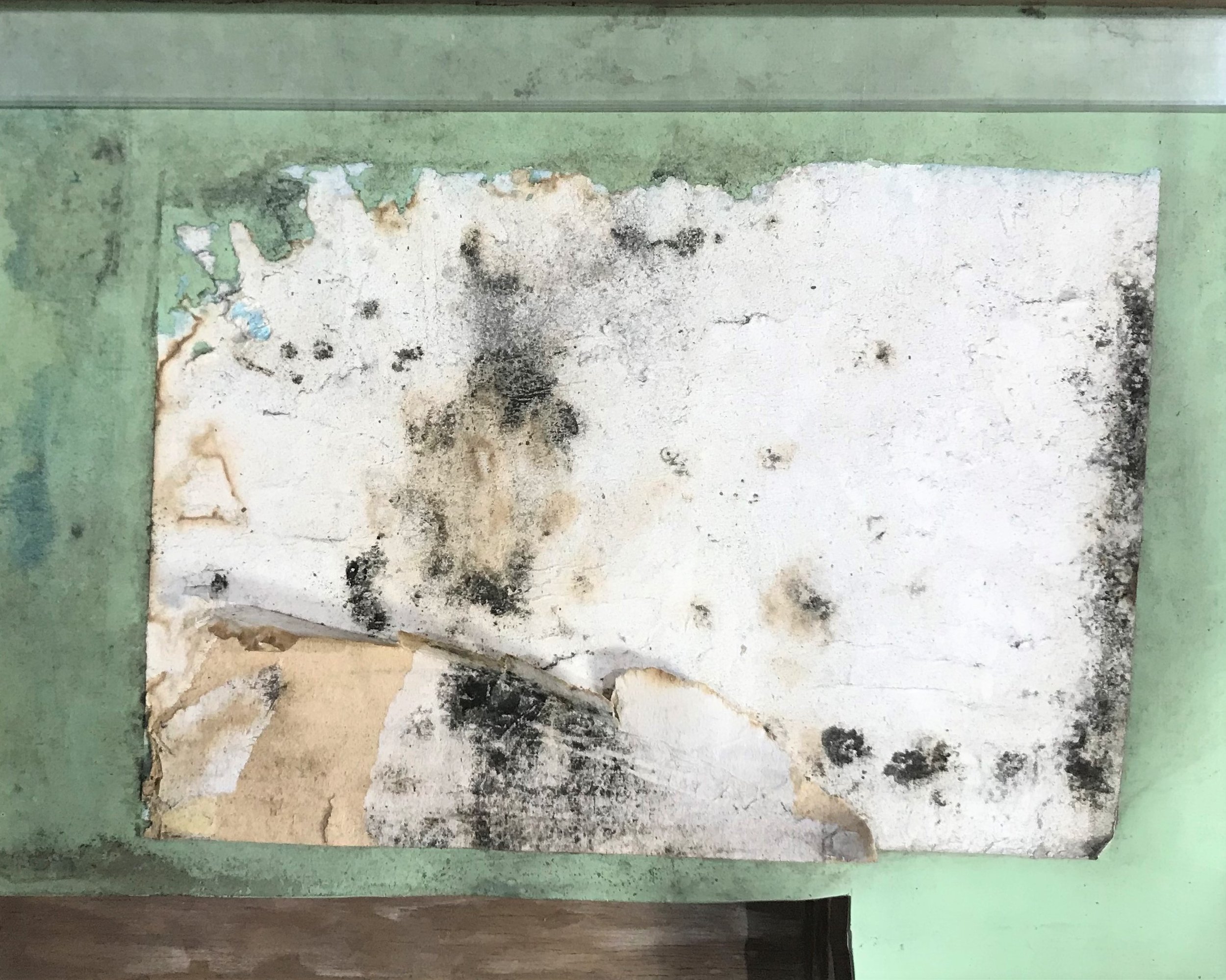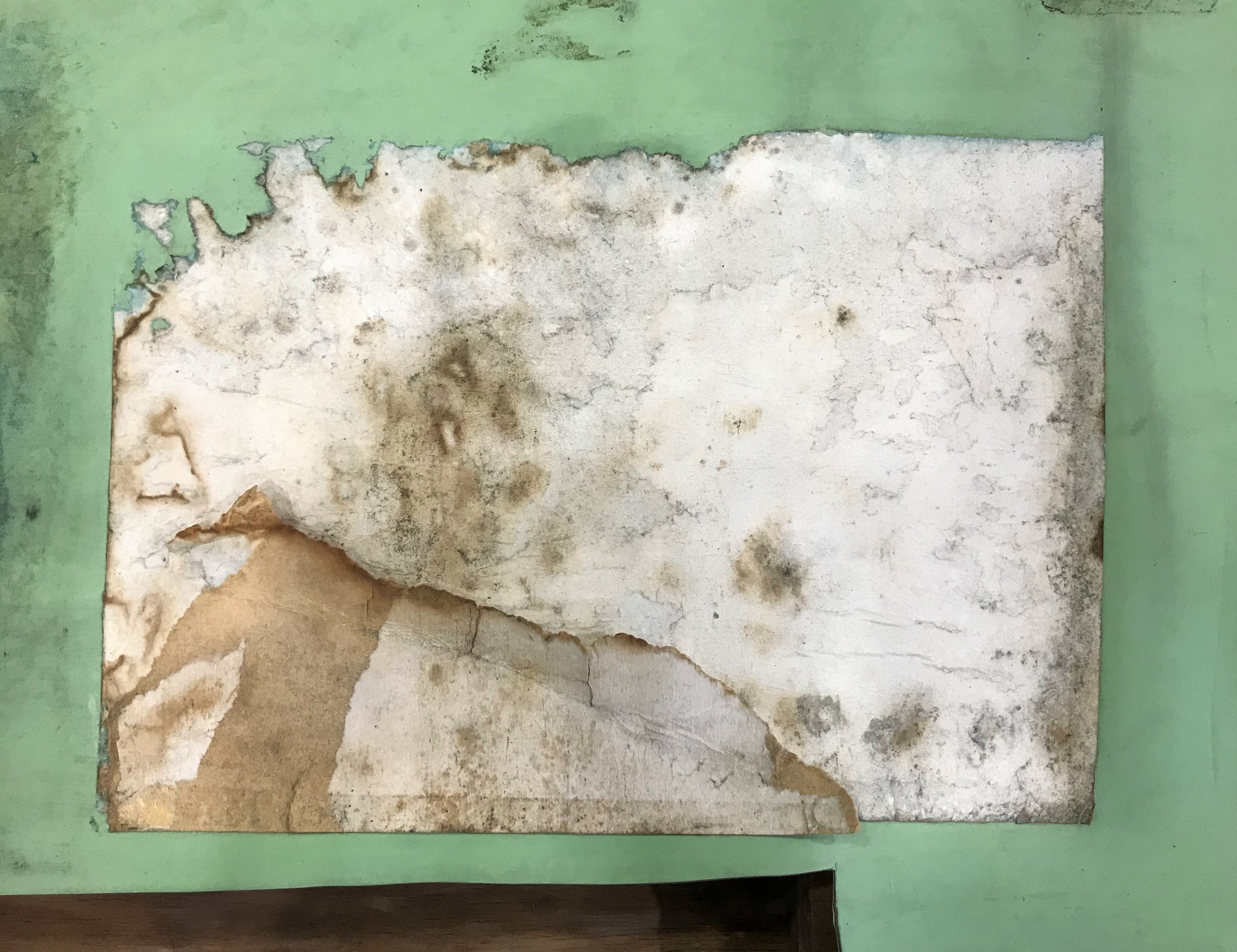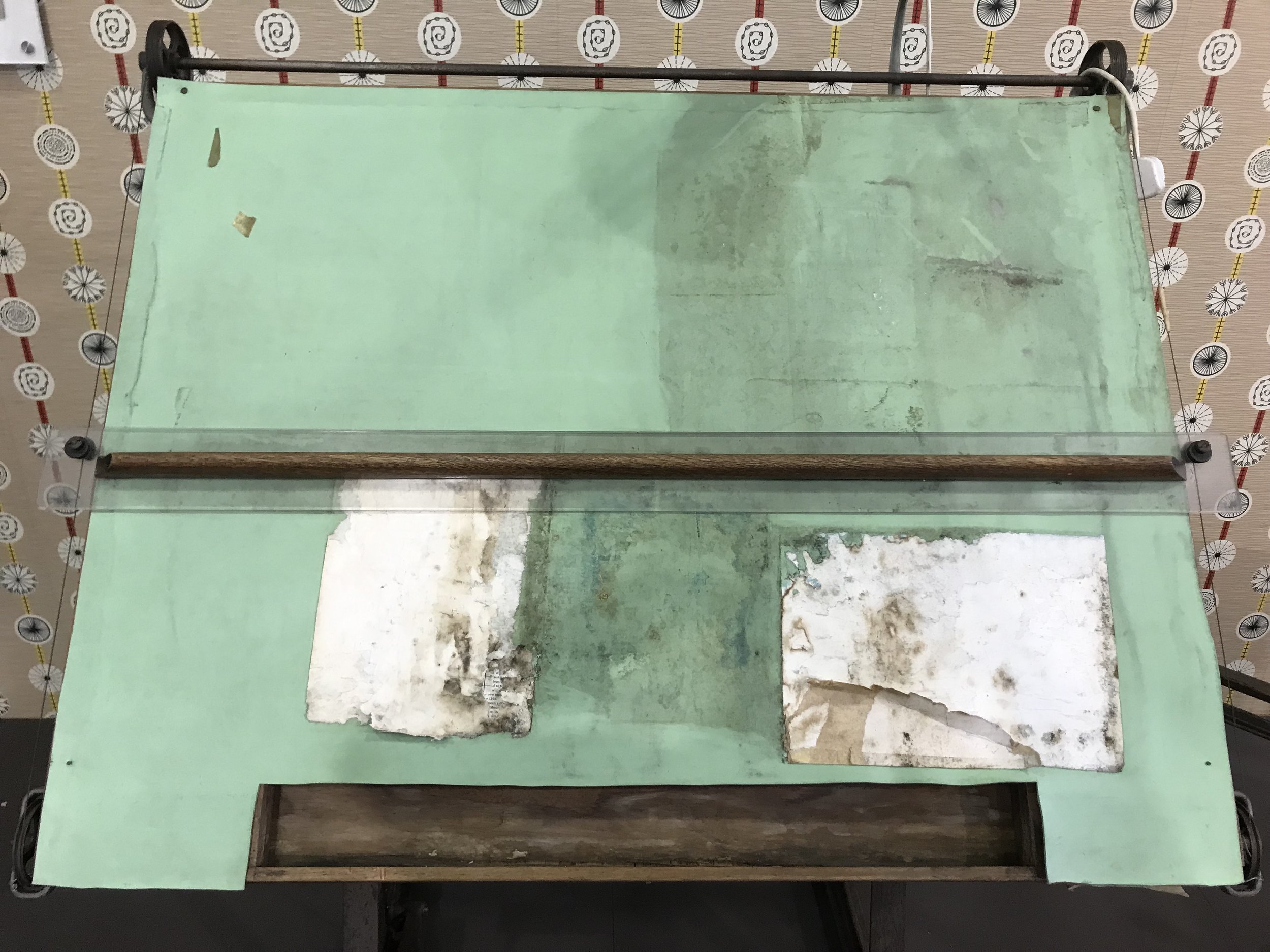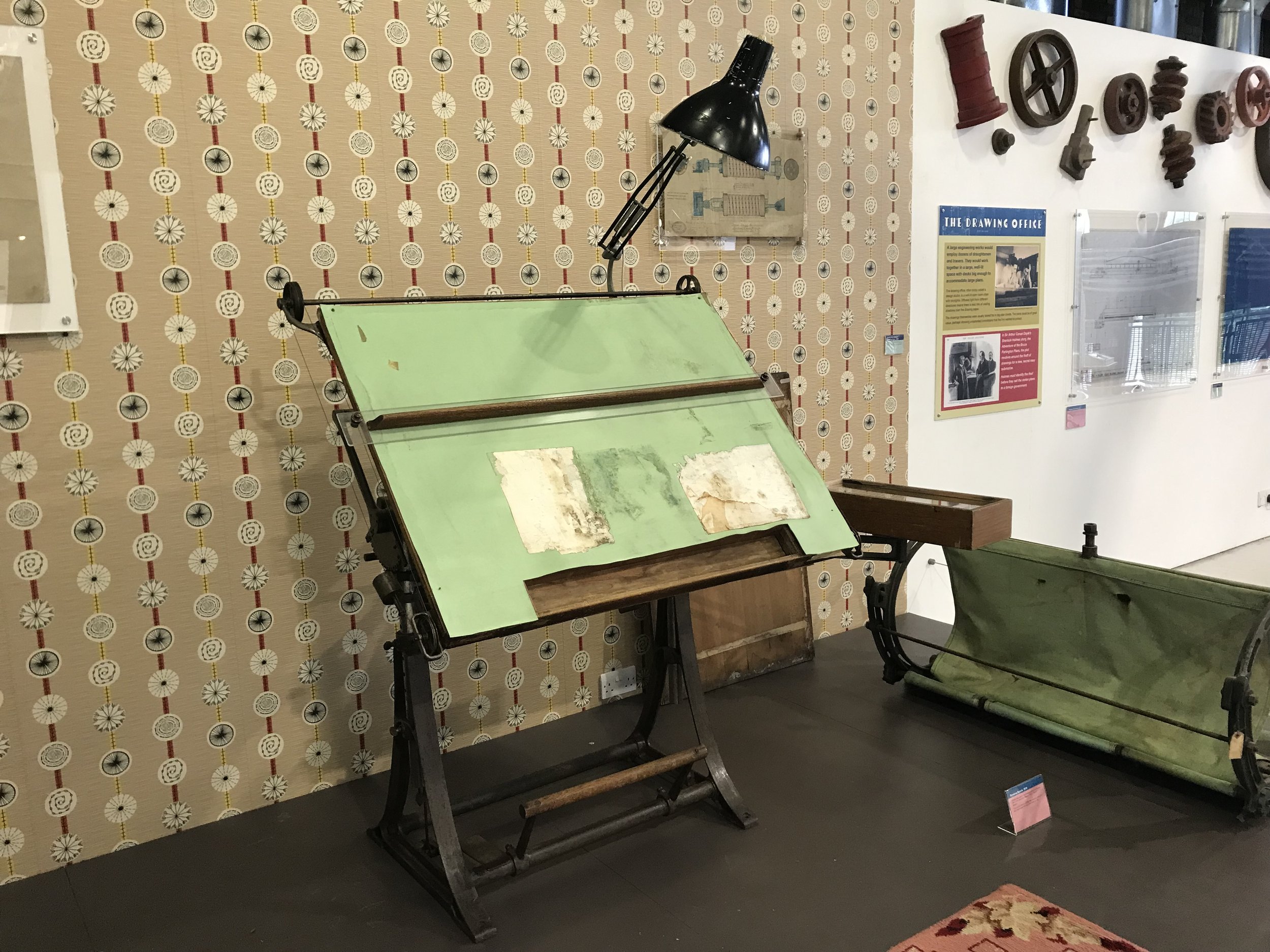Conservation Public Engagement at Summerlee Museum of Scottish Industrial Life
These past few weeks I have been working onsite at Summerlee Museum of Scottish Industrial Life, preparing an object for an exciting new exhibition, ‘Back to the Drawing Board’, which opened on July 1st.
The object, a 19th century drafting table (below), had been in the museums warehouse store for some time, and was heavily soiled, with significant corrosion around the base of the metal legs. After consulting with Industrial History Curator, Justin Parkes, who has been working hard to put the exhibition together, I came up with a treatment proposal, and set about about making the table fit for public display.
The goal of the treatment was to stabilize the object, while preserving as much of the original paintwork and marks of use as possible. Work began in the warehouse store with the removal of soiling, and the reduction of the heavy corrosion, from the iron metal legs. This was done using glass bristle brushes, and Garryflex, a type of abrasive rubber block. There was also a significant amount of solidified oil with embedded dirt around the adjustable iron metal arms that needed to be reduced. This was done using white spirit and cotton swabs. Once the corrosion and solidified oil were sufficiently reduced, two coats of microcrystalline wax were applied.
Below, you can see the difference this treatment made to the metal feet on the proper right rear corner of the table. The original paintwork has been retained as much as possible, but the corrosion and soiling is much reduced, and the wax will help to prevent against future corrosion.
The remainder of the treatment took place inside the museum after the exhibition had opened, so that the public could engage with the conservation works, and ask questions about the treatments being undertaken. The first task was to stabilize the paper labels adhered to the vinyl board cover of the table top; smoke sponge was used to reduce the soiling, and the labels were then treated with 2% Klucel G in isopropyl alcohol to consolidate any friable areas and prevent further losses (see below, left to right: before, & after treatment).
The final task was to reduce the soiling on the vinyl board cover itself, and after a few trials, I found that cotton swabs lightly moistened with deionized water were sufficient for the job. Every effort was made to retain all marks of use, such as the remnants of paper labels, pieces of tape, and ink stains…. but as many of the witness marks (like the soiling) were water soluble, this was a slow process!
But this gave me lots of opportunity to chat with the museum visitors, who were very interested to know what I was working on, and what tools I had been using.
Partway through the treatment, the pullies on either side of the table top were gently tested, and the position of the parallel slide ruler adjusted so that the paper labels and vinyl cover underneath the ruler could be accessed. In doing this, I found some impressions that had been made in the vinyl board cover from previous drawings!
See images below for the progression of the vinyl board cover treatment!
Post Conservation…. The treatment of the drafting table is now complete, and it will be on display until October 22nd in ‘Back to Drawing Board’.
Go check it out now, or follow the link below for more details!



